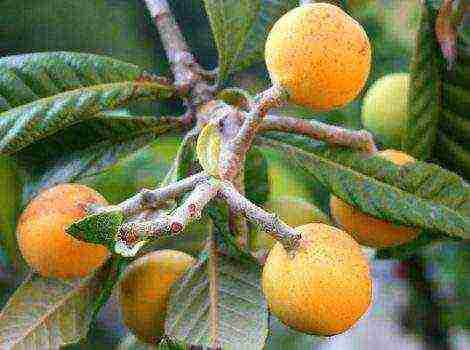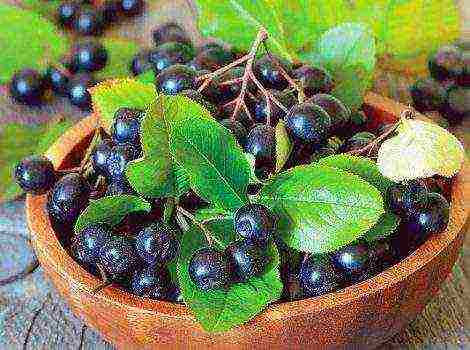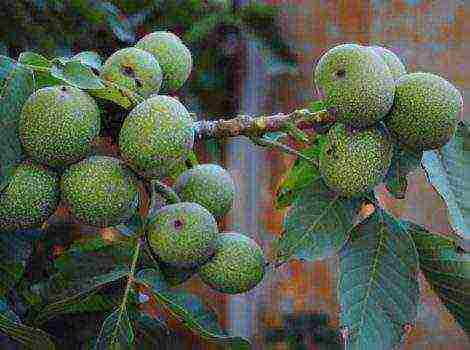In every garden, there is a culture called plum. The fruits of such trees are very tasty and juicy, but, unfortunately, they do not have a long shelf life.
therefore it is very important to know the ripening time and the rules for harvesting and storing the crop.
Also, significant damage can be caused by premature shedding of fruits, which can be prevented by knowing some tricks.
Plum varieties differ in different ripening periods. Harvesting can begin in July, and this process will end in September-October.
Early plum varieties - their ripening period falls at the end of July - beginning of August. Such trees give bountiful harvests. The brightest representatives are: Morning, Opal, Renkold, Record, Red ball and Zarechnaya early.
Mid-season plum varieties - such fruits have excellent taste and aroma. Their ripening period lasts from mid-August to mid-September.
Experienced gardeners distinguish the following varieties: Blue Gift, Zanyatnaya, Sukhanovskaya, Mashenka, Romain and Souvenir of the East.
Late plum varieties - such fruits are most often used for conservation, they begin to ripen at the end of August and the fruits can be harvested until mid-September.
The most popular varieties are: Renkold Tambovsky, Bogatyrskaya, Zhiguli, Svetlana and President.
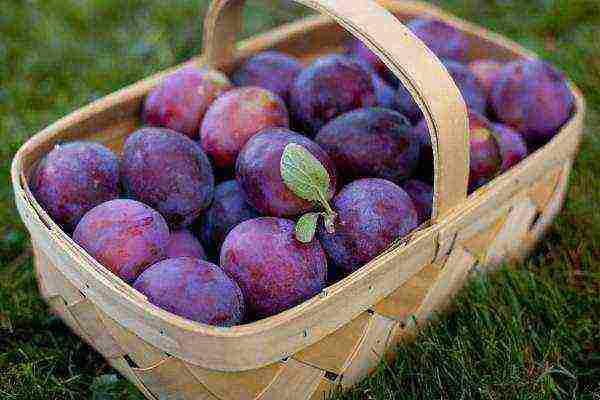
Ural and Siberia differ significantly in climate from the central and southern regions of Russia. Plum ripening and harvesting in the Urals and Siberia falls at the end of August - beginning of September.
I would also like to note that very often, due to a lack of heat and light, plums do not ripen to full ripeness.
The harvest period does not depend on the color of the fruit... The ripening period is determined by the variety of the plum, not its color.
How to remove fruits correctly so that they are stored longer?
For that, so that the harvest of plums is preserved as long as possible, you must adhere to the following rules while collecting fruits.
Compliance with this rule will significantly save time and effort, as well as increase the shelf life of the plum. After all, it is much easier to collect the fruits already dry than to prepare them for maturation for a long time.
If plum is harvested as soon as the fruit begins to form, then such a process will prevent shedding and significantly increase the amount of the crop.
While picking fruits in the country, they shouldn't be soft, to the desired degree, this fruit can ripen in a dry and warm place.
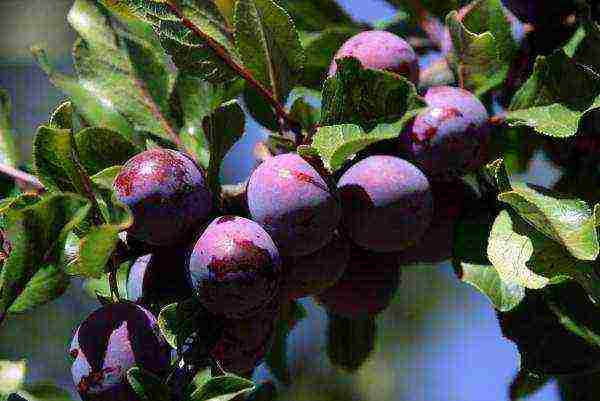
The plum is protected from the influence of the external environment by a wax coating on the skin, respectively, if it is not damaged, then the shelf life will be much longer.
What to do: do not touch the fruit once again during picking they should be torn off along with the stalk or use scissors.
It is most convenient to immediately place the fruit in boxes or storage containers.
You may be interested in the following publications:
- A detailed description of the variety of plums Egg blue.
- Detailed description of the Pissardi plum variety.
- Detailed description of the Candy plum variety.
Harvesting technology, although simple, but many ignore this sequence, which is why fruits that have not yet been removed from the branches will be unsuitable for storage or transportation. Start collecting plums from the lower branchesmoving from the edge of the branch to the trunk.
For picking fruits from the top of the tree, it is recommended to use a ladder or stepladder... In no case should you stand on a branch.
Such actions entail not only damage to the tree, but can also cause serious damage to health in the form of bruises, abrasions and even fractures.
Same you can't shake the tree, because the fallen fruits will be crumpled and will not be able to lie for a long time, such plums can either be eaten immediately or used to make compotes, jams or juices.
In order for the fruits to be preserved for up to 2 months, you need to create comfortable conditions for them. To begin with, they are carefully folded without causing mechanical damage and without erasing the wax coating.
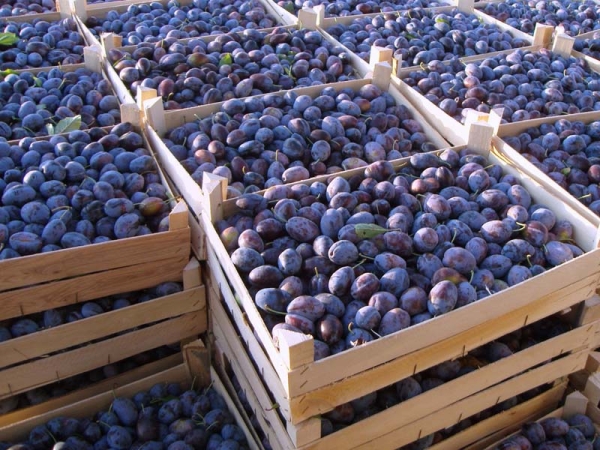
The best containers are wooden boxes or plastic trays lined with paper. Then you need to provide a comfortable temperature from 0 to -2 degrees and a humidity of 85%.
Everything damaged plums cannot be stored, they will very quickly begin to deteriorate and rot.
The crop ripens unevenly, therefore it is best to remove the fruits in 2-3 doses.
Why does the plum fall ahead of time?
It often happens that the fruits, without waiting for full ripeness, begin to fall from the tree. Because of this, you can lose most of the harvest, so it is very important to know the reasons for the shedding of the plum. Why do fruits fall?
Lack of nutrients in the soil can lead to complete shedding of the fruit. Fertilize the plum tree according to a special scheme. Also, if you inspect the trees in a timely manner, you can identify which component is missing.
In that case, when there is little potassium in the soil, the branches become weaker and cannot bear the weight of the ripe fruit.
When the soil is low in nitrogen, plums may not ripen at all, because due to a lack of this component, the tree begins to grow more slowly, the leaves turn yellow, the ovaries are too small and quickly crumble.
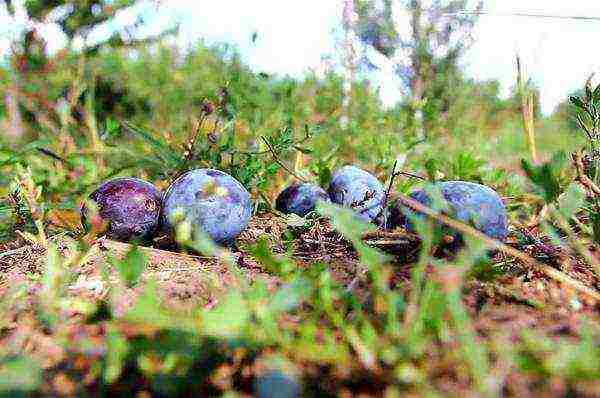
The root system of the plum is located very close to the surface of the ground, and because of this, the tree needs to be watered much more often. Lack of moisture can lead to crushing of fruits and to their shedding in an unripe form.
Another reason for plum shedding can be attack of various insect pests... They can harm both the tree as a whole and its fruits:
- Plum moth - she lays her eggs in plum fruits in spring, and young caterpillars actively begin to feed on ovaries. Because of this, there is a significant loss of yield or shedding of it in an unripe form in early summer.
- Puffy leg - these butterflies begin to fly over the tree about a week after flowering, laying their eggs in the fruit bone. The caterpillars of the fatfoot devour the plum from the inside, so their actions are often difficult to determine, they go unnoticed until the fruits begin to shed in early June.
- Plum sawfly - the larvae of these insects enter the ovary and begin to feed on the pulp and bones that have not yet matured. Because of them, shedding of still green fruits occurs.
What to do to prevent shedding?
In order not to lose a significant part of the plum crop, it is necessary to properly care for the tree and perform all the necessary procedures on time.
Timely and abundant feeding will replenish the supply of nutrients and the tree will have more strength to form and ripen fruits. In addition, the fertile soil will help ripe plums stay on the branches for as long as possible.
You also need to carefully monitor the state of the tree, and if you find signs of a shortage of one or another component, you will need to immediately add it.
The aridity of the soil is one of the reasons why the fruits begin to crumble. Therefore, very it is important not to miss watering time, do not allow the soil to dry out, correctly build a schedule for this procedure.
On average, the plum is watered 3-5 times during the entire flowering and fruiting season.
But this indicator may decrease or increase depending on the following indicators:
- the amount of precipitation;
- air humidity level;
- groundwater level;
- also, the abundance of watering can be affected by the presence of other plantings in adjacent territories.
Experienced gardeners recommend watering the plum using special trenches., which are dug out at the level of the crown. Its depth should be 40-60 centimeters.
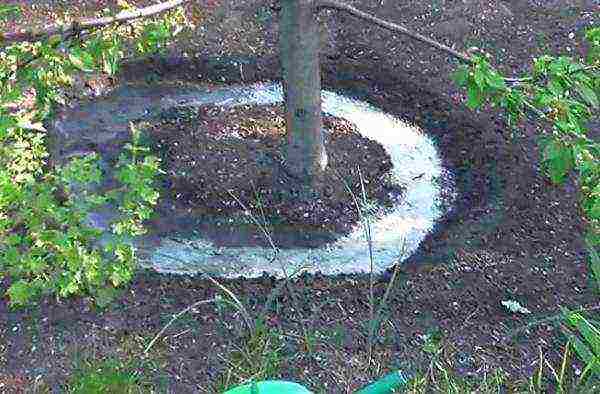
To keep moisture longer, it is necessary to mulch the soil around the tree trunk, preventing it from drying out.
Also, in order to prevent shedding of plum fruits, you need to know the measures to combat insect pests.
Plum moth - in order to prevent fertilization of larvae, it is recommended to hang pheromone traps on a tree in late May - early June, which have a detrimental effect on males.
You can also use various chemicals such as Fitoverm or Karbofos.
Puffy leg - in order to get rid of insects, you need to treat the affected trees with "Confidor" or "Dantop".
This procedure is carried out immediately after the end of flowering and is repeated after 10-15 days. For a more effective fight, you need to collect and burn all the carrion.
As a preventive measure, experienced gardeners recommend sprinkling the tree with water during the summer of butterflies.
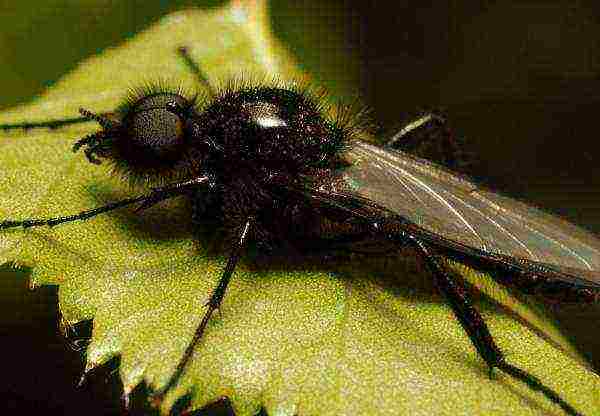
Plum Sawyer - you can get rid of pests by spraying the tree with insecticides during the formation of pink buds.
Plum trees produce a rich and tasty harvest that can be harvested in mid-July and finished in late September.
To keep plums as long as possible and prevent shedding, you need to follow all the above tips.
